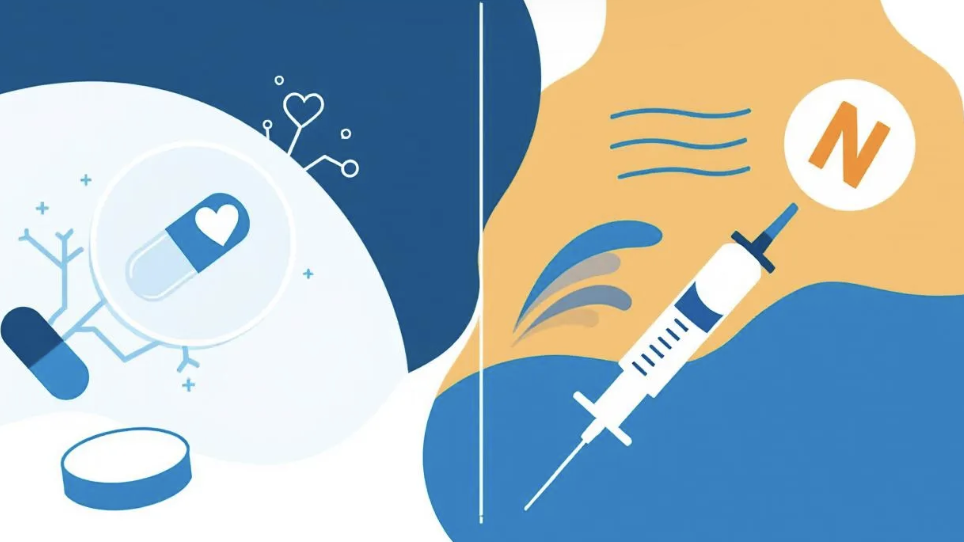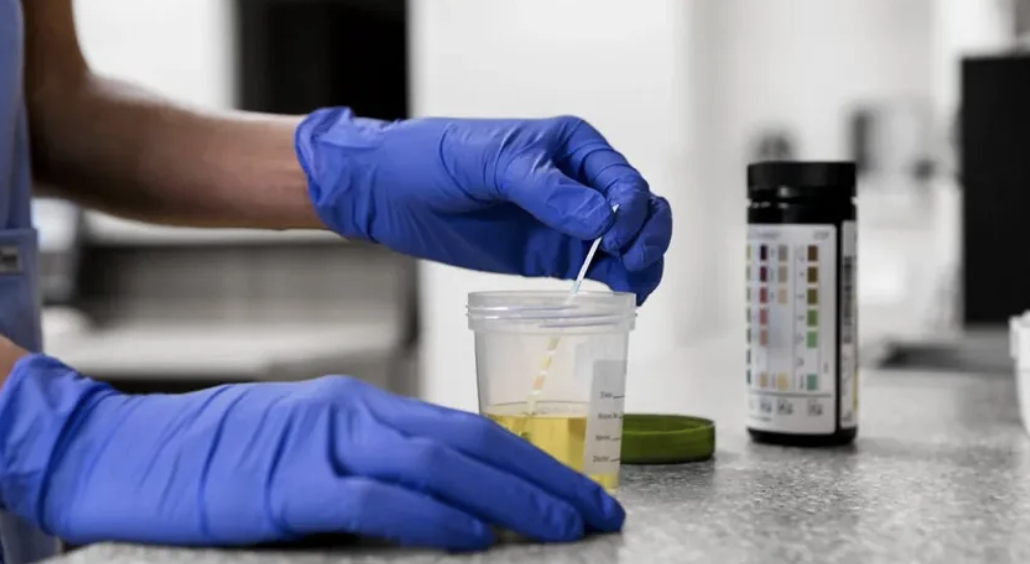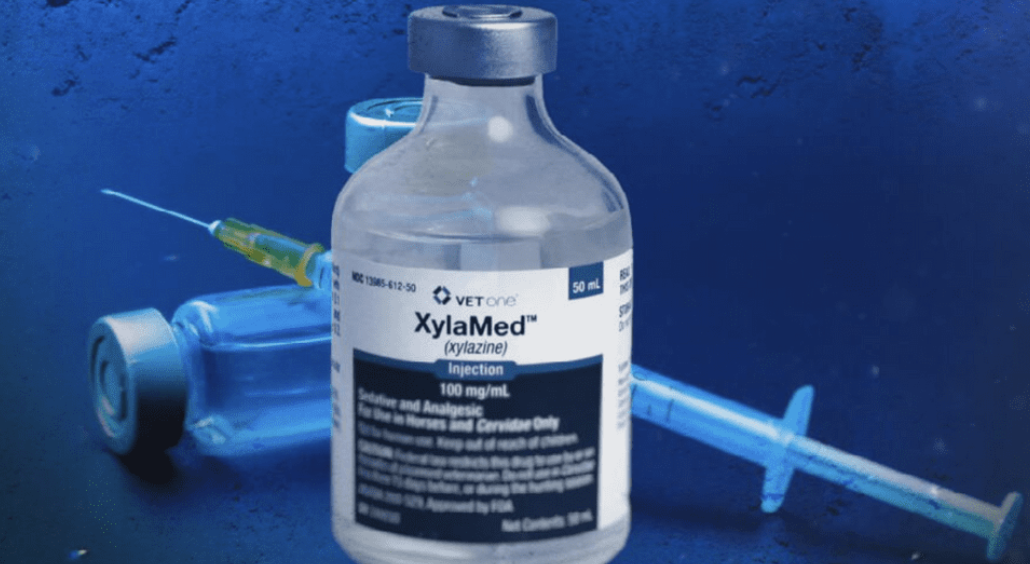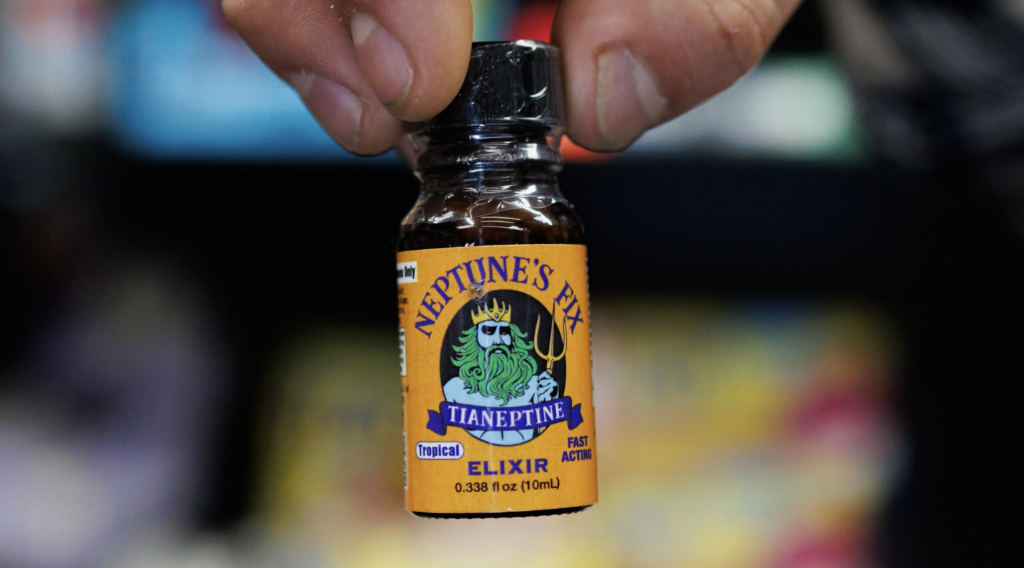Suboxone vs Naloxone: what’s the difference? Suboxone is used to manage opioid addiction, while Naloxone reverses overdoses. Both are essential tools in fighting opioid misuse. In this article, we’ll cover their uses, how they work, and which might be right for you.
Key Takeaways
- Suboxone is used for long-term treatment of opioid addiction, while Naloxone is an emergency medication that reverses opioid overdoses.
- Suboxone combines buprenorphine and naloxone to manage cravings and dependency, whereas Naloxone acts as a standalone opioid antagonist for overdose situations.
- Naloxone is widely available over the counter, while Suboxone requires a prescription and is part of a comprehensive treatment plan.
What is the difference between Suboxone and Naloxone?
Suboxone and Naloxone differ primarily in purpose and application. Suboxone treats opioid addiction, whereas Naloxone reverses opioid overdoses. Suboxone is a combination of buprenorphine and naloxone, designed to reduce cravings and withdrawal symptoms in individuals with opioid dependence. In contrast, Naloxone is an opioid antagonist that quickly reverses the effects of an opioid overdose by dislodging the opioids from their receptors.
Suboxone comprises buprenorphine, a partial opioid agonist, and naloxone, which deters misuse. It manages opioid dependence and reduces relapse risk as part of a long-term treatment plan. Naloxone, available in forms such as injections and nasal sprays like Narcan, is fast-acting and crucial in emergency situations to restore normal breathing and consciousness in individuals experiencing an overdose. Oxycodone is another medication that is often discussed in the context of opioid treatment.
This guide aims to provide clarity on when each of these medications is appropriate, their benefits, and the critical differences that set them apart. Understanding these distinctions can help individuals and caregivers make informed decisions during treatment or emergency scenarios involving first medication approved.
Understanding Suboxone: Composition, purpose, and how it works
Suboxone combines buprenorphine and naloxone. Buprenorphine, a partial opioid agonist, helps reduce cravings and withdrawal symptoms without producing the same high as other opioids. This makes it valuable for opioid dependence treatment, allowing individuals to stabilize and focus on recovery.
Naloxone in Suboxone primarily safeguards against misuse. If someone attempts to inject Suboxone, the naloxone component will induce withdrawal symptoms, discouraging this form of misuse. Suboxone is FDA-approved and commonly prescribed as part of a comprehensive treatment plan that includes counseling and behavioral therapies.
Understanding Naloxone: Function, forms, and primary use
Naloxone, an opioid antagonist, reverses opioid overdoses. It works by quickly displacing opioids from their receptors in the brain, thereby reversing the effects of the overdose and restoring normal breathing and consciousness. This makes Naloxone crucial for emergencies.
Naloxone is available in various forms, including injections and nasal sprays like Narcan. Its fast-acting nature temporarily counteracts opioid overdose effects, buying time for emergency medical services.
Naloxone is available over the counter in many states, making it accessible for family members or friends of those at risk of overdose.
Suboxone vs Naloxone: Key differences and similarities
To further clarify the distinctions and similarities between Suboxone and Naloxone, consider the following comparison:
Composition: Suboxone is a combination of buprenorphine and naloxone, whereas Naloxone is a stand-alone opioid antagonist.
Purpose and Use: Suboxone plays a key role in opioid addiction treatment by reducing withdrawal symptoms and supporting long-term recovery efforts, while Naloxone is used to reverse opioid overdoses.
Mechanism of Action: Buprenorphine in Suboxone acts as a partial opioid agonist, while Naloxone displaces opioids from receptors to reverse overdoses, demonstrating a ceiling effect.
Onset and Duration: Suboxone is used for long-term treatment, whereas Naloxone is fast-acting and used in emergencies.
Availability and Prescription Status: Suboxone requires a prescription and is part of a comprehensive treatment plan, while Naloxone is available over the counter in many states.
Target Audience: Suboxone is for individuals seeking long-term recovery from opioid addiction, while Naloxone is for emergency use by individuals or caregivers in overdose situations.
While both medications involve naloxone, their effects and uses are not interchangeable. Suboxone’s naloxone component acts as a deterrent to misuse, whereas standalone Naloxone is a life-saving intervention during an overdose.
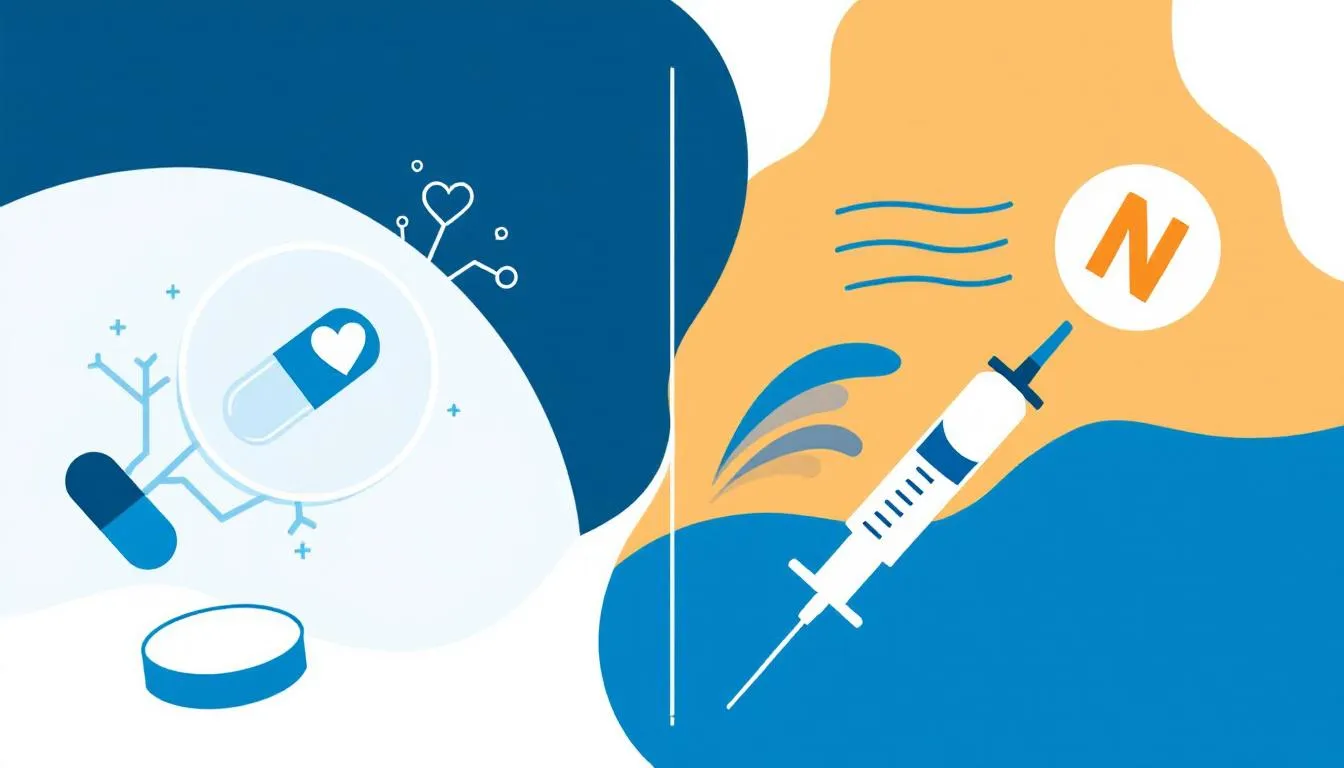
When to use Suboxone vs Naloxone: Patient scenarios and medical guidance
Suboxone is typically prescribed for long-term management of opioid dependence. Patients actively using opioids might start Suboxone treatment to stabilize and reduce cravings. Those with a history of opioid use disorder may benefit from Suboxone as part of a treatment plan including counseling and behavioral therapies.
Naloxone is administered during acute overdose emergencies. If someone is found unresponsive with signs of an opioid overdose, Naloxone should be administered immediately to reverse it and restore normal breathing. Family members or caretakers of individuals at high risk of opioid overdose should also have Naloxone to be prepared for emergencies.
If a patient recently relapsed and struggles with severe withdrawal symptoms, Suboxone can help stabilize them. Conversely, if the same patient overdoses, Naloxone provides an immediate life-saving solution.
Effectiveness of Suboxone and Naloxone in opioid treatment
Studies show that buprenorphine-naloxone effectively treats opioid use disorder and opioid use disorders, with the following benefits:
- Lower relapse rates compared to placebo
- Reduced opioid-related overdoses compared to placebo
- Longer retention in treatment programs, indicating higher buprenorphine treatment efficacy
Clinical data indicates that buprenorphine-naloxone can effectively suppress opioid withdrawal symptoms better than alpha-2 agonists. Moreover, it offers a safer alternative to methadone, allowing for home administration without the need for daily visits to specialized clinics.
On the other hand, naloxone has been instrumental in reducing overdose fatalities when widely available. Its fast-acting nature and over-the-counter availability make it crucial in emergency overdose situations, especially when an overdose occurs, saving countless lives.
Combining buprenorphine with naloxone in Suboxone reduces misuse potential while maintaining treatment effectiveness for opioid dependency.
Side effects and risks of Suboxone and Naloxone
Like all medications, Suboxone and Naloxone come with their own set of side effects and risks:
- Suboxone addiction can occur if the medication is misused or stopped abruptly without medical guidance, highlighting the need for a structured tapering plan.
- Potential serious side effects include liver issues and respiratory problems.
- Patients on Suboxone should be monitored for dental issues, as it may cause cavities and other oral health problems.
Naloxone can trigger severe withdrawal symptoms in opioid-dependent individuals if used improperly, leading to physical dependence. Both medications can cause central nervous system depression, increasing the risk of drowsiness and impaired alertness. Common gastrointestinal side effects of both drugs include constipation and nausea.
Access, cost, and legal status of Suboxone vs Naloxone
Naloxone is widely accessible without a prescription in many states, with Narcan, a nasal spray form, available over the counter. This accessibility is crucial for quick emergency use by individuals or caregivers to reverse opioid overdoses.
In contrast, Suboxone requires a prescription and is part of a comprehensive treatment plan for opioid dependence. The introduction of generic buprenorphine-naloxone has significantly reduced its cost, making it more affordable for patients. Pricing frameworks and government initiatives support Suboxone’s availability and affordability.
Are there alternatives to Suboxone and Naloxone?
For those exploring Suboxone alternatives, options like Methadone, Naltrexone, and Lucemyra provide varied approaches to opioid treatment and withdrawal management. Methadone, for example, is another Medication-Assisted Treatment (MAT) option that works as a full opioid antagonist to manage withdrawal symptoms and cravings. Naltrexone (Vivitrol) is an opioid antagonist that blocks opioid receptors and is used for relapse prevention.
Lucemyra is another option that helps manage withdrawal symptoms but does not act on opioid receptors. Naloxone is crucial for emergency overdose reversal, while these alternatives offer various options for long-term treatment and relapse prevention, including long-acting opioid therapies.
How to decide between Suboxone and Naloxone
Choosing between Suboxone and Naloxone largely depends on the situation. Naloxone immediately reverses opioid overdoses, temporarily restoring normal breathing and central nervous system functions. Naloxone should be used when an overdose is suspected.
Suboxone is for long-term treatment of opioid addiction, managing withdrawal symptoms and cravings. Patients with opioid addiction should discuss the best approach with healthcare professionals, as Suboxone can be integral to a comprehensive treatment plan.
Bottom Line: Choosing the right tool for opioid recovery or emergency
Suboxone and Naloxone are both critical in combating opioid misuse and overdose. Suboxone helps manage opioid addiction by reducing cravings and withdrawal symptoms, while Naloxone is life-saving in overdose emergencies.
Improving access, education, and reducing stigma around these medications are essential for those affected by substance use disorders. Encouraging open conversations about substance use and Medication-Assisted Treatment (MAT) and overdose support tools can save lives and pave the way for recovery and healthier communities.
FAQs about Suboxone and Naloxone
Can you use Naloxone while on Suboxone?
Yes, Naloxone can be safely used in emergencies to reverse an overdose while you are on Suboxone. It's an important safety measure to have available.
Is Naloxone the same as Narcan?
Yes, Narcan is indeed a brand name for Naloxone, specifically formulated as a nasal spray for the emergency reversal of overdoses.
How fast does each drug work?
While Naloxone acts within minutes, how long Suboxone stays in your system depends on dosage, metabolism, and treatment duration.
Can you buy Naloxone without a prescription?
Yes, Naloxone can be purchased without a prescription in many states, making it more accessible for those in need. It's important to check your local regulations for specific availability.
Is Suboxone used for overdose reversal?
Suboxone is not suitable for overdose reversal; it is intended for the long-term treatment of opioid addiction.


